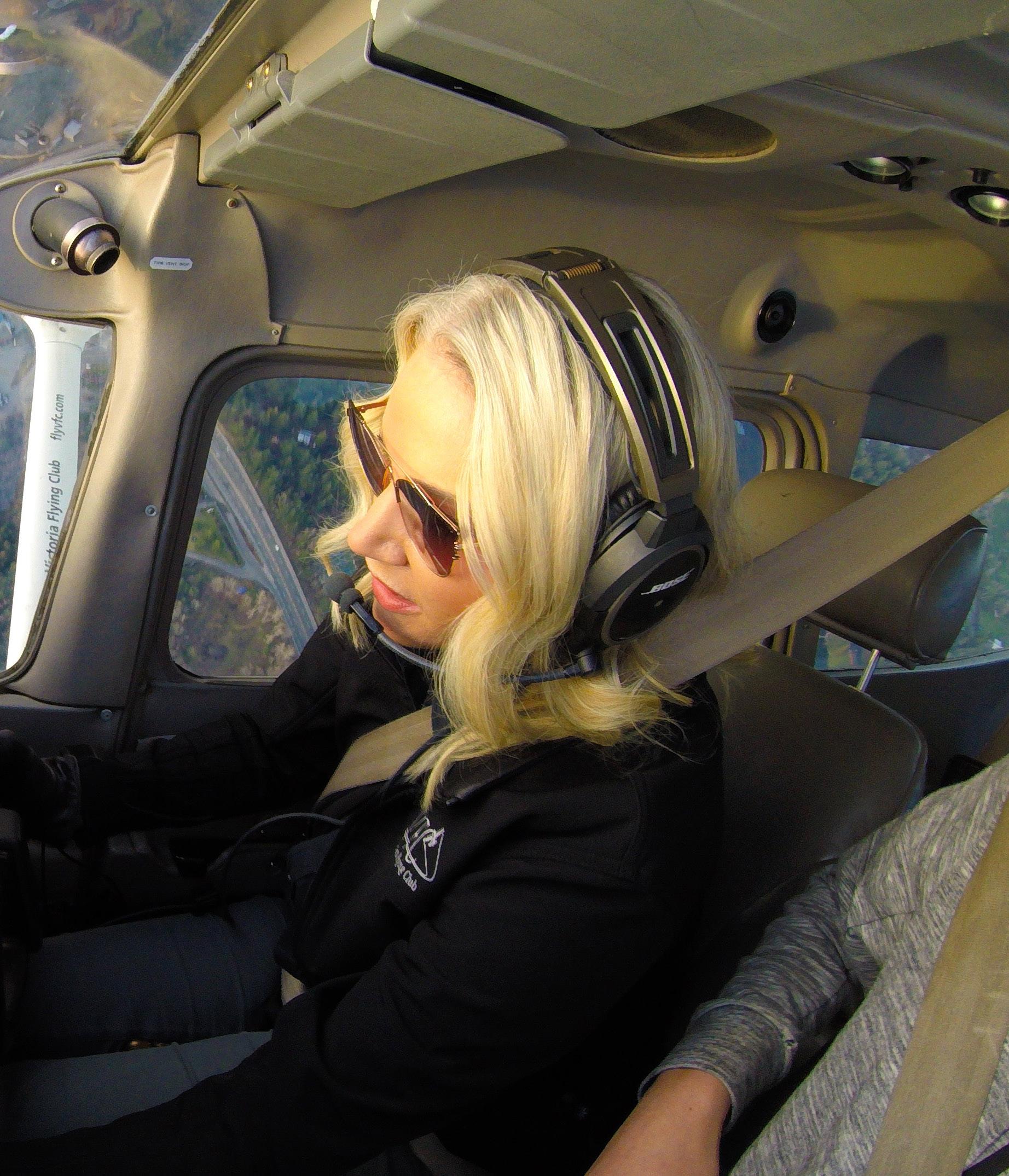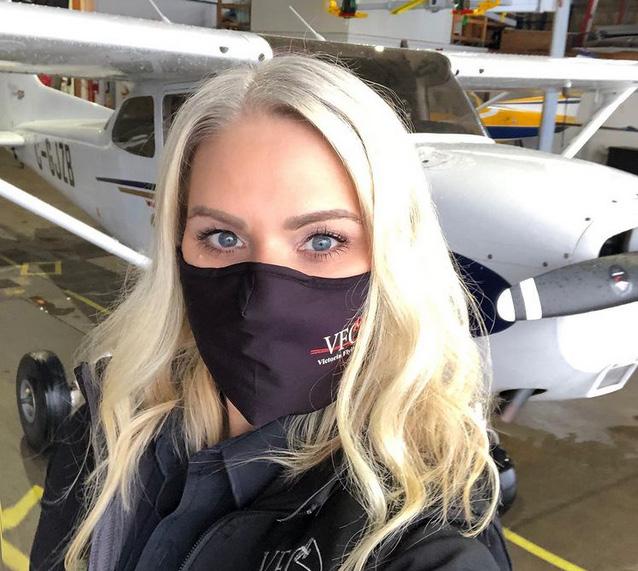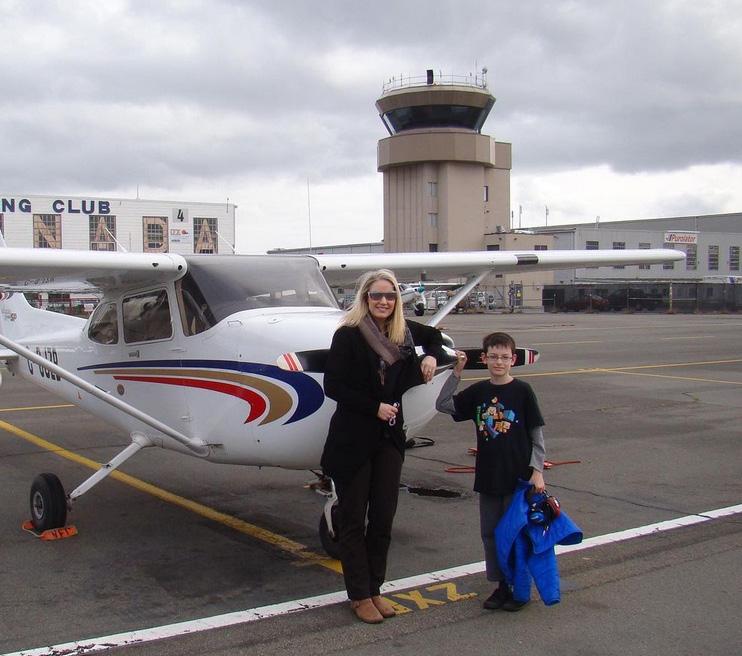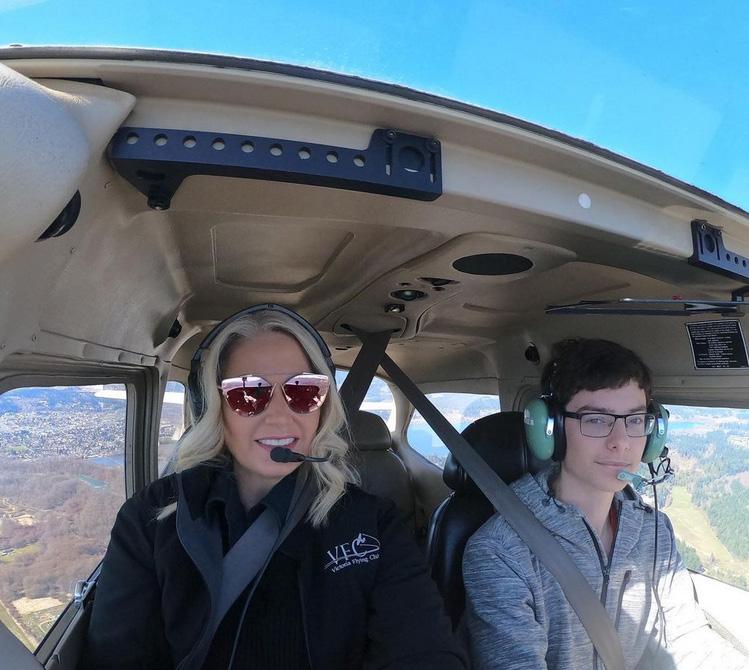
9 minute read
Laura Van Buskirk, Staff Profile
Laura Van Buskirk
VFC Staff Profile @pilot_laura
Advertisement
Editor's Note: Many thanks to our fabulous instructor Laura Van Buskirk for sharing with us how she got involved in flying!
Q: How long have you been instructing flying students?
A: I've been flying for 11 years, teaching for eight. This is part time for me as I work full time as a nurse. I love what I do at VFC and I think it shows. I am passionate and enthusiastic and I like to share that with students. I take a true interest in each and every student, genuinely care about their success and I go to every effort to help them. One thing I love about VFC is the friendly environment of the club. You’ll be welcomed in, and you’ll always see a smiling familiar face whether you pop your head into the restaurant or the lounge or just stop in the lobby for a few minutes.
Q: What made you want to learn to fly? And beyond flying, what motivated you to become an instructor?

A: My nursing job! I am a Registered Nurse in Occupational Health for the Canadian Government. My nursing job had me flying a lot, in small aircraft to remote locations including a lot of helicopter flying. I loved the low level flying and thought I would like to get my Private Pilot Licence. I started with only that in mind and as I flew more, I grew to love aviation more. Now here I am, a Certified Flight Instructor for eight years.
Q: How long does it typically take to learn to fly, and what kind of additional time investment would one need to make in order to become a flight instructor?
A: As you decide your own schedule when taking flying lessons, the time to learn to fly can vary quite a lot. For people flying a few times a week, it may take 6-8 months to complete their Private Pilot Licence, and two years or more to complete their Commercial Pilot Licence with MultiEngine and Instrument Ratings. I have seen some people complete everything in a year, which is quite remarkable.
The Flight Instructor Rating is an additional 30+ hours of flying lessons, and more briefing and studying time and exams. It could take anywhere from 2-6 months or up to 12 months if you are learning part time.
Q: What does it mean to be a Class 2 Flight Instructor?
A: There are 4 Classes of Flight Instructors in Canada.
Class 4 is a new Flight Instructor, under direct supervision of a Class 1 or 2 Flight Instructor. Every lesson they teach must be approved and signed for by the Class 1 or 2, and their students must do a check ride with a Class 1 or 2 Instructor prior to their first solo flight and prior to their flight test. With the required experience, the Class 4 becomes Class 3 and no longer need to be under direct supervision, although there is always a Chief Flight Instructor who supervises training overall. A Class 2 Flight Instructor must have a minimum of 500 hours flight instructing experience (500 hours in the air, and each training flight with a student is about 1 hour in the air). They must write an additional exam and pass a Class 2 Flight Test. A Class 2 Instructor can supervise the Class 4 Instructors, complete the pre-solo and pre-flight test check rides, and work as the Chief Flight Instructor at a Flight Training Unit. A Class 1 Instructor must have more experience still, and does the same as a Class 2, but also trains pilots to be Flight Instructors.

Q: What is your favourite airport to fly to?
A: If you had asked me a few years ago about my favourite airport to fly to, it was Boeing Field. It’s only an hour away with no line up at the border and a fun flight past the Seattle Space needle at 1000’ AGL. Now however, I’ve definitely shifted from the fun shopping/sports game day trips to trips exploring the natural beauty surrounding us.
My favourite airport now is more of a route. At the Victoria Flying Club, we offer an in-house Mountain Rating. We are
surrounded by mountains in the Pacific Northwest and it’s a must to understand the weather and risks and other considerations of flying in these regions. We fly from Victoria to Hope to land on a grass runway. We then fly up the Fraser Canyon surrounded by gorgeous mountains in all directions to land in a small place called Lillooet where the beauty is breathtaking. However, with its location where two valleys come together, there can be a lot of wind shear and the weather can change in an instant. We then fly west again, this time past Whistler and into a small air strip in Squamish where the winds can be chaotic and the trees can be tricky to avoid on approach to land. We continue southwest heading back to Victoria and often get routed directly over Vancouver International Airport on the way.
Q: Describe the most memorable experience you have had as a pilot.
A: My most memorable experience as a pilot was probably completing the 300 nautical mile cross-country flight that is required for the Commercial Pilot Licence. I flew from Victoria, to San Francisco and back along the Oregon and California coast. Yes, it’s quite a bit more than 300NM, but I figured why not, I still had several more hours to complete towards my licence. Flying down hundreds of miles of sandy beaches, rough ocean and tall cliffs. I had fortunately planned to land at a small airport across the bay and it happened to be clear of fog. It was stunning to look over downtown San Francisco as I flew by, covered in a blanket of fog yet clear where I landed. I spent three days there, shopping and sightseeing before I flew back.

Q: Can you tell us a funny moment in your career?
A: A particular funny moment I recall was when I was teaching a PPL student how to recover from the approach to stall. In the stall, you recover by lowering the nose first. In this exercise, we’re not stalled yet, the order of recovery would be to add full power, lower the nose and level the wings. This decreases the stalling speed. But if you push forward before adding power you get quite the G-force. My student recovered by pushing the nose forward rather quickly which created a very strong G-force. Everything in the plane that wasn’t secured went everywhere! My sunglasses flew off my face and ended up in the back of the plane, papers everywhere and both of us momentarily lifted out of our seats. We recovered and we were safe, but it got us laughing, a lot!
Q: What kinds of airplanes do you fly? Which is your favorite?
A: I fly small single-engine planes and small multi-engine. Most of the training for new pilots is done on single engine planes. Our flying school has 10 Cessna 172s, and a Piper Seminole Twin Engine. I haven’t experienced flying any larger multi-engines planes, but I would love to step into the cockpit of the 787 Dreamliner one day ;-).
Q: What does it mean to you to be a female flight instructor?
A: Females still only make up about 4-5% of pilots in the world. To be honest though, I did not even think about gender when I started learning

to fly. I grew up in a very supportive environment where I was never discouraged from doing anything because I am female, it was never even mentioned, and when I started flying lessons and worked towards my flight instructor rating, I learned in a very encouraging environment. Over time while completing my licences, I came to notice that women are underrepresented as pilots. There have been other female flight instructors come and go at Victoria Flying Club but there was a period of about six months when I was the only female flight instructor at our school of over 17 instructors. It was then that the gender gap really stood out to me and I started to take pride in being female in a male dominated environment. It was not for lack of trying to hire female instructors, but rather that there were no female instructors to hire. I certainly try to encourage any women interested in flying to pursue their goals and slowly we will close the gender gap between female and male pilots. Whether you are a man or a woman, it is not more difficult to fly an airplane. I feel fortunate now to be in a position where I can encourage women to become pilots and teach them how to fly as they begin a long and fulfilling career in aviation.

Q: What has been your biggest challenge as a pilot?
A: I love my job. I love both my full time nursing job and my part time pilot job. Sometimes it’s a challenge for me to maintain work-life balance. I work a lot. Fortunately, because I enjoy instructing so much, it often doesn’t feel like work. But trying to balance two jobs, maintain a healthy lifestyle (#runner) and family and so on, can be a challenge sometimes. I am also fortunate enough to be able to take vacation a few times a year which helps keep things in check.
Q: Where in the world would you like to fly for just a few hours?
A: I would LOVE to fly around Europe, low enough to do some sightseeing. France, Italy, Portugal and England, that’s where I would like to fly.
If you would like to connect with Laura, you can reach out to her at the Club (ask Dispatch) or check out her Instagram channel, @pilot_laura.
Images below, left to right: 1. VFC got masks with their own logo on it. 2. "Jacob started flying with me when he was 10 years old!" 3. "Now that Jacob just turned 17 he was completed his Private Pilot Licence flight test." 4. Credit goes to @heathmoffattphoto. "In my Occupational Health Nurse position with Health Canada, part of my job has been to complete medical assessments on lighthouse keepers. Periodically I go out to the lighthouses with Coast Guard by helicopter for up to a week at a time. Now with Covid-19, most of my work has been in contact tracing. After finding the contact, I follow up and monitor people who have been exposed. I teach them about Covid-19, the rules of self-isolating and make sure they are following them, assess and monitor for any potential Covid-19 symptoms and check if they need any supports to maintain isolation (such as grocery delivery, mental health help). I even teach how to care for their pet while in isolation!







